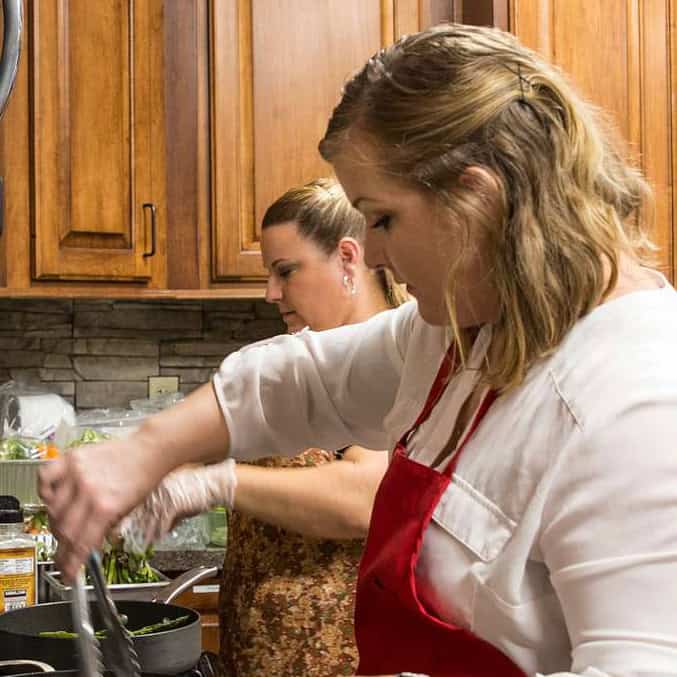Yes, it’s the winter, but you don’t have to let the white snow thwart your green thumb. Many kinds of produce can be grown indoors so you can continue to enjoy fresh, flavorful foods, made right in your own home. Not sure which produce to grow inside? Read on!
Herbs
Nearly any dish can be enhanced with the addition of fresh herbs. In the great outdoors, herbs love light. Indoor light isn’t nearly as strong and is especially weak during the winter months, so you’ll need to make sure your herbs are near a south-facing window for maximum exposure. A few herbs that fare well indoors include chives, parsley, and oregano.
You may want to invest in special herb-growing sets, or you can use small pots and place them on your windowsill. Whatever method you choose, be sure to read the instructions on the packet carefully for specific directions. Also consider which herbs you use the most in your recipes. Parsley, rosemary, and thyme are a few that show up in recipes all the time or can be substituted for other fresh herbs flavors.
Tomatoes
You say tomato; we say you can grow it indoors! Get yourself a six inch pot and potting soil, plus a few small dowel rods to use as stakes. Choose a variety of tomato that doesn’t get too big, something like Cherry, Pixie, or Small Fry. Germinate the seeds in a small pot before transferring to the six inch pot, and then lightly fertilize every few days. Be sure to keep your pot near sunlight and rotate it so that all sides of the plant are exposed at some point. Bruschetta made with homegrown tomatoes and oregano, anyone?
Peppers
Sweet bell peppers add that special pop of color and flavor to any dish and are so delicious they can be eaten raw. To grow peppers indoors, you’ll first want to soak the seeds in water for a few hours. Next, plant the seeds in small containers filled with starter soil. Place the containers in a warm, sunny location and keep the soil moist but not soggy. Once the plants have begun to grow, transfer each one to its own small pot. Again, be sure the plants are getting lots of light and water. Once the peppers appear ripe in color and size, you can pick your peck of peppers.
Carrots
These delicious veggies grow surprisingly well indoors. You’ll want to plant the carrots in pots that are at least 8 inches deep. After you’ve filled the pot with soil, sprinkle a few seeds around and lightly cover them with more soil. As the plants are growing, keep the soil moist but not soggy. Keep your pot near a sunny spot, and after the leaves have grown three or four inches, use fertilizer to add nutrients. Since you won’t be able to see the carrots maturing below the soil, write down the number of days for growing that is recommended on your packet of seeds. When the time comes, loosen the soil a little with a fork before trying to pull the carrot up. Gently wiggle the carrot back and forth and then behold your very own delicious food.
Onions
What’s round and white and goes with winter? No, not snowmen – onions! Growing onions indoors won’t leave you in tears, at least not until you slice them up. Several plants can be grown in one large container, so look for a pot that is at least 8 inches deep and around 10 inches wide. Again, exposure to light is important, so if your plants won’t get 6 hours of natural light, you may need to use a grow light to supplement. Keep them watered and you’ll soon find your onions ready to eat. But wait! Don’t just throw away the scraps. Most onions can be cut and replanted for a continuous harvest long after the winter months have ended.

Hello, I am Cristy. I love cooking but what I love most is keeping my kitchen tools and appliances top notch. I enjoy writing about everything I have learned around the kitchen. I believe that keeping your kitchen tools well cleaned and maintained produces the best dishes and drinks. Besides writing and cooking I enjoy traveling, camping, hiking and music.
